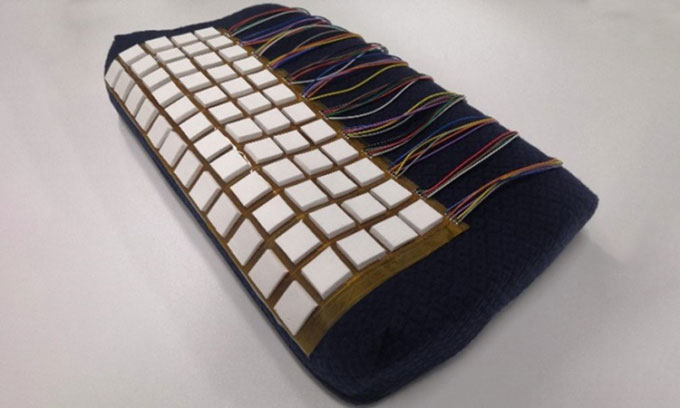Smart pillow gets energy from head movement
Smart pillow helps monitor sleep quality, and generates electricity to operate thanks to the friction nano generator.
Close monitoring in a medical laboratory overnight can provide a clear picture of sleep quality. Meanwhile, wrist-worn trackers are a more viable solution for people to use every day, but far less accurate than the first method.

Scientists develop a sleep-tracking pillow that powers itself through head movement.
Chinese scientists have developed a smart pillow that sits in the middle of these two solutions, New Atlas reported on June 5. It can monitor sleep quality through head movement, and rely on it for energy. The new study was published in the journal ACS Applied Materials & Interfaces.
The idea of this smart pillow comes from previous research by a group of Chinese scientists on sleep monitoring systems with the ability to track movement and collect energy during the night thanks to a friction nanogenerator. (TENG). These systems, which convert friction and mechanical energy into electricity, represent a major advance in wearable research because of their ability to harness energy when the body is in motion.
These generators used to be built into eye patches and bed sheets for sleep monitoring. In the new study, the team of Chinese experts looked for a solution that did not compromise user comfort. The new pillow model contains layers of soft, porous tribionic polymers that generate an electric current when the head moves. They are placed at the top of a regular pillow, generating a voltage in response to the pressure applied to it.
Tests showed that the pillow could monitor the pressure distribution of the prosthetic device as it changed position. The pillow is also sensitive enough to track finger movements while tracing letters.
Although this self-powered pillow is designed to test sleep quality, the team of scientists think that it could be used for many other purposes such as monitoring patients with neck conditions, or acting as a sleep aid. an early warning system for people prone to falling out of bed.
- Smart pillows 'treat' snoring sleepers
- Smart pillow Dreampad helps prevent insomnia
- 'Safety pillow' suffocates newborns
- A hat with a matching pillow and a pillow to sleep anywhere
- Sleep well on long flights with this cool travel pillow
- Do not wear a bra and keep your head high when sleeping
- Video: Smart hug pillow to bring good sleep
- Battery Charger for Mobile Devices
- Close up of the most expensive pillow in the world, worth the price of an apartment
- Make medicine pillows to prevent disease
- The hat glows according to the movement of the head
- Charge the phone battery from the user's movement?
 The US company is about to build a supersonic passenger plane of 6,000km / h
The US company is about to build a supersonic passenger plane of 6,000km / h Japan develops avatar robot as in fiction film
Japan develops avatar robot as in fiction film Australia tested the world's first mango picking robot
Australia tested the world's first mango picking robot America develops technology to separate water from animal waste
America develops technology to separate water from animal waste